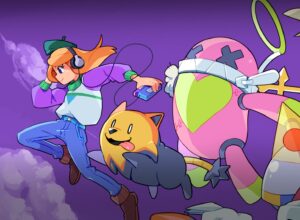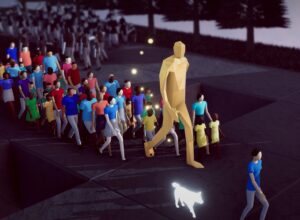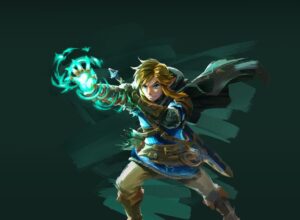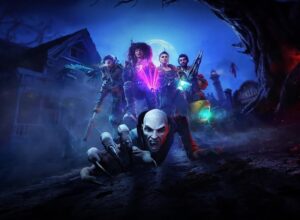Pixel art is one thing, but the “visuals” of Wordle – the first viral video game hit of the year – are just a bunch of cryptic, coloured emoji squares?
Even if you’re not aware of Wordle (which seems unlikely) you’ve probably noticed it in your periphery. Especially if you’ve spent any time on Twitter recently.
It manifests in your feed as squares of grey, green, and orange, preceded by a somewhat cryptic sequence of numbers.
Wordle 198 3/6
⬜⬜⬜🟨🟨
🟩🟩🟩🟩⬜
🟩🟩🟩🟩🟩— Tom Baines (@TomThumbsticks) January 3, 2022
Wordle. 198. 3/6. Some coloured emoji squares.
Wordle 199 4/6
⬜🟨⬜⬜⬜
⬜🟩⬜⬜🟩
🟩🟩🟩⬜🟩
🟩🟩🟩🟩🟩— Tom Baines (@TomThumbsticks) January 4, 2022
Wordle. 199. 4/6. The squares are in a different pattern, here, and there’s an extra row.
Wordle 200 3/6
⬜🟨🟨⬜🟨
🟩🟩🟨🟩⬜
🟩🟩🟩🟩🟩— Tom Baines (@TomThumbsticks) January 5, 2022
Wordle. 200. 3/6. And some coloured emoji blocks – three rows again – that obviously mean something to those in the know, but to an outsider? It’s abstract enough to not make sense, but deliberate enough to convey the existence of a pattern. Some meaning. A thread that can be pulled. A puzzle on a puzzle.
And that’s it. That’s how they get you.
As marketing goes – and it doesn’t feel intentionally like “marketing” in the traditional, gauche, direct-selling sense – it’s a slice of genius: a hint of breadcrumbs, scattered liberally around social media, leaving the public to wonder, and ponder, and do all of the legwork themselves.
The “smart” thing to do, if you were the game’s creator, Josh Wardle, would be to slap a link on each tweet, generate some user intent or a call to action, and drive more clicks back to Wordle. (Where you would presumably monetise those clicks via some means, like display advertising, or a premium version of the game in app form.) Anyone working in digital marketing or sales is probably screaming at Wordle to weaponise its shareability and virality whilst it’s popular.
But the goal of Wordle isn’t to drive engagement or generate sales or even to make money – it’s to pose a little puzzle and generate a little fun. Or as Wardle, put it in an interview with BBC Radio 4’s The Today Programme:
“I don’t understand why something can’t just be fun. I don’t have to charge people money for this and ideally would like to keep it that way.”
Wardle originally built the game to play with his crossword-loving partner. They would play together in the mornings. Then he opened it up to family and friends via WhatsApp and, before long, to the general public. It may all be in service of a little fun, but good UX is rarely an accident. And the ability to frictionlessly (and spoilerlessly) share results with each other is key to its success.
Like the game itself, the inherent shareability of Wordle’s results is in service of sharing the fun with loved ones, not of marketing. It was never intended as a sacrifice to the gods of virality.
But the way those results have permeated organically through social media, like the gentle waft of a tempting, delicious pie, cooling on a windowsill? That’s a slice of magic, a piece of almost-accidental genius that most game designers and marketers would kill for.
It seems strange, but those little emoji boxes and those sequences of numbers? In the depths of winter, and amid the leanness of January, and with seasonal affective disorder on top of regular depression and climate crisis and COVID and… everything else that’s going on in the world? Those tri-coloured grids have genuinely become the highlight of someone’s day. Of multiple people’s. A tiny piece of shared experience amid an endless onslaught of horrors.
Wordle. 201. ?/6. Let’s go.

Be sure to check out our Discovery section for more indie games and left-field curios. Want to enable more content like this? You could always support Thumbsticks on Patreon, or buy the team a coffee.






